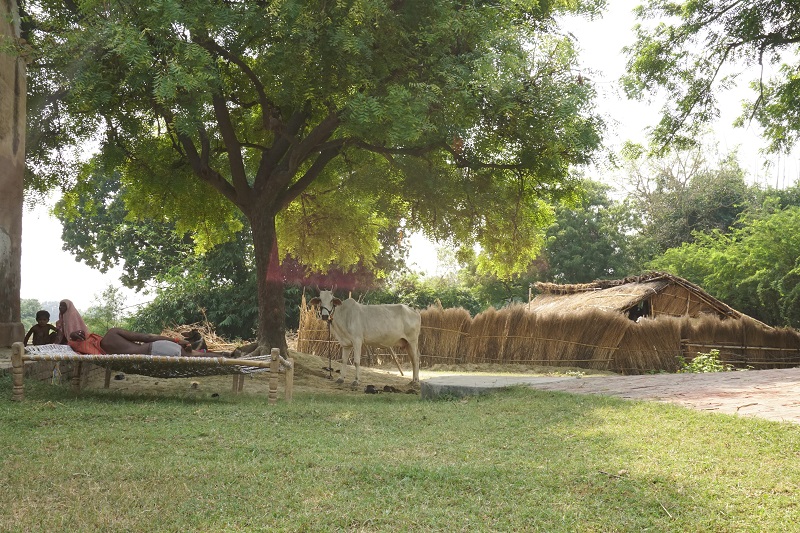Flying into a party
There are several Bollywood films which showcase Durga Pooja in Kolkata. Devdas, Parineeta and Kahani being some of the recent films. Like many festivals in India, it is a religious festival which has come to represent the culture and charm of a city. Flying into Kolkata, we saw large parts of the city lit up with led lights and lamps. We only got more excited as we entered a famous yellow cab of Kolkata. The yellow cars are all Hindustan Motors, Ambassador, the iron tank which was a hangover from the Soviet era. Crowds were out and we couldn’t be happier!
Bit of a let down
Until Kolkata, we had been lucky with hotels. Most had been good with a few exceptions but even the exceptions were ok. First of all, the address given by the hotel was for Park St area. Therefore, we booked our yellow cab for that area prepaid. After getting closer, we realised that the hotel was 2-3 km further and had to pay the taxi driver extra despite prepaying it. Bummer!
Next, as we entered the hotel, there was a smell of cigarette smoke though the signs said ‘No Smoking’. Once we entered the room, however, things for from bad to worse. The bed sheets and the quilt cover were full of dust and hair. We spent the next 2 hours trying to find an alternative hotel room or an airbnb to avoid this. Being Durga Pooja, the hotel rates were high and the airbnb host did not reply in time. Our only choice was to stay in the hotel and get it cleaned first thing next morning.
Empty Streets
Once we got out of the hotel the next morning, we noticed something strange. The streets were almost deserted and one could literally walk in the middle of the road without worrying about traffic. It was somewhat bad for us though as most of the local restaurants weren’t open. We ended up walking to the next suburb and eating buffet at a Chinese Restaurant – Mainland China. This pattern continued throughout our stay in Kolkata. The streets were empty in the day and full at night.
Durga Pooja Fiesta
This was our first time in Kolkata during Durga Pooja and once we stepped out, nothing could prepare us for it. Each neighbourhood collects money to build a grand entrance or a ‘pandaal’ which leads to the idols inside. Some neighbourhoods have been building the pandaals for over a 100 years. The pandal itself has the Goddess Durga, Lakshmi, Saraswati and the gods Ganesh and Kartikeya.
However, its the social aspect of the festival on the city which makes it the biggest Hindu festival in India. Neighbourhoods in an area and some big pandaals across the city compete with each other on the best decorations and the biggest crowds. In addition, traditional artists across the city work on the most unique decorations in the pandaal. This competition and the art of the pandaal along with the culture of the city makes millions of people, most locals and some tourists walk on the streets.
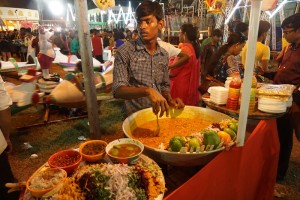 The best way to cover Durga Pooja is on foot as cars can get stuck trying to find parking. This walking also helps work up an appetite and the Bengalis love to eat. People can easily cover a couple of suburbs in an area between sunset and 10pm. We know this is true as we ourselves covered the area of a metro station seeing the pandaal, eating and taking photos along the way.
The best way to cover Durga Pooja is on foot as cars can get stuck trying to find parking. This walking also helps work up an appetite and the Bengalis love to eat. People can easily cover a couple of suburbs in an area between sunset and 10pm. We know this is true as we ourselves covered the area of a metro station seeing the pandaal, eating and taking photos along the way.
 In our experience, we felt that the smaller pandaals inside the lanes had put more effort into the decorations of the entrance. The bigger pandaal had such huge crowds that one never got to enjoy the decorations and the organizers moved people out too quickly to manage the crowds. Some of the pandas we saw had decorations like temple of Khajuraho, tribal-themed pandaal, pandaal with kitchen utensils, pandaal made completely of tissue paper and a pandaal full of dolls.
In our experience, we felt that the smaller pandaals inside the lanes had put more effort into the decorations of the entrance. The bigger pandaal had such huge crowds that one never got to enjoy the decorations and the organizers moved people out too quickly to manage the crowds. Some of the pandas we saw had decorations like temple of Khajuraho, tribal-themed pandaal, pandaal with kitchen utensils, pandaal made completely of tissue paper and a pandaal full of dolls.
Other than the pandaal itself, various pandaals had unique idols of durga and the other gods and goddesses. There were idols of different colours, made in the older village style and our favourite, Durga in the sea. The entire pandaal was like underwater cave or a tunnel with a transparent Durga idol which was lit up. This was the only pandaal we had visited where Durga was by herself.
 There were also a few pandaal that focused on other deities such as Mahisasur and Durga’s lion. Additionally, we managed to attend the aarti at some of the pandaal as well. While the priest performed the prayers, there are drums played. The beats were just amazing and made Shruti want to dance! Another unique thing we noticed was that the priest actually dances to the beats while performing the prayers! Really lovely sight.
There were also a few pandaal that focused on other deities such as Mahisasur and Durga’s lion. Additionally, we managed to attend the aarti at some of the pandaal as well. While the priest performed the prayers, there are drums played. The beats were just amazing and made Shruti want to dance! Another unique thing we noticed was that the priest actually dances to the beats while performing the prayers! Really lovely sight.
Sightseeing in the City
Since we had the mornings free, we decided to do a bit of sightseeing around the city. We had initially decided to visit the Dakshineshwar Kali temple in the north of Kolkata but in the good ol’ Kolkata style of Durga Pooja, the metro was running between 3pm and 4am. Therefore, we walked from our hotel in Bhawanipore to the Victoria Memorial Gardens and eventually Victoria Memorial.
Victoria Memorial was grand and beautiful but just like Taj Mahal, not the best on a hot sunny day. We got inside as quickly as possible and saw the museum within the building. It was interesting seeing the British history in India and the history of Kolkata itself.
Another important site of Kolkata is the Howrah bridge. In Indian schools, each big city has a monument and the monument for Kolkata is the Howrah bridge. We took the metro to Mahatma Gandhi Road station and walked towards it. The bridge is all metal and the road is actually underneath the bulk of the bridge. The Hoogly river slowly flows underneath it and the sight at night was magnificent.
Kalighat Temple
Other than the Durga Pooja, Kolkata is famous for several temples. We decided to visit the famous Goddess Kali temple, Kalighat. Once inside the temple, we had to line up to get to the idol itself. The line was huge and people kept pushing from all directions. That along with the heat made us irritated when the priests kept adding people to the front of the line for a fee. After the struggle, we eventually reached the idol. Idol was a natural rock formation and we were wowed before the priests and the people behind us pushed us to keep walking.
Sweets of Bengal
A trip to Kolkata would not be complete without eating the Bengali sweets. We had heard of ‘Shondesh’ from the movie Devdas and were keen to try it out. During one of the walking marathons watching pandaal, we came upon a shondesh shop. We asked the guy in Hindi that we wanted to try a few of them and he replied back in Bengali while giving us a few. We don’t know what it was made of, we don’t know how to they make them but gosh they were as good as any drug. Each shondesh was so soft and sweet that we couldn’t stop eating. We actually bought a box of them for the next day. Finally, the next day after finishing the box from the day earlier, we saw another shondesh shop and had more. We will soon look like the God Ganesh with his big tummy!
Summary
Accommodation
We stayed in a bad hotel and we would not recommend anyone to stay there. However, Park St roughly divides the city into 2 parts and most of the sights are within a few metro stops.
Transport
The Kolkata yellow cabs are the ‘auto’ of the city. They take you around for a few kilometres and are very cheap as well as honest. There are cycle and hand-pulled rikshaws as well to for short distances.
Final Thoughts
Although, we have tried to describe the feeling and the flavour of Kolkata Durga Pooja, the reality is that neither Shruti nor I have the writing capacity to explain the festival. In our opinion, the festival is as big as the Carnivale in Brazil or NYE in Sydney. If one gets a chance, try and attend Durga Pooja in Kolkata. It is worth the visit.
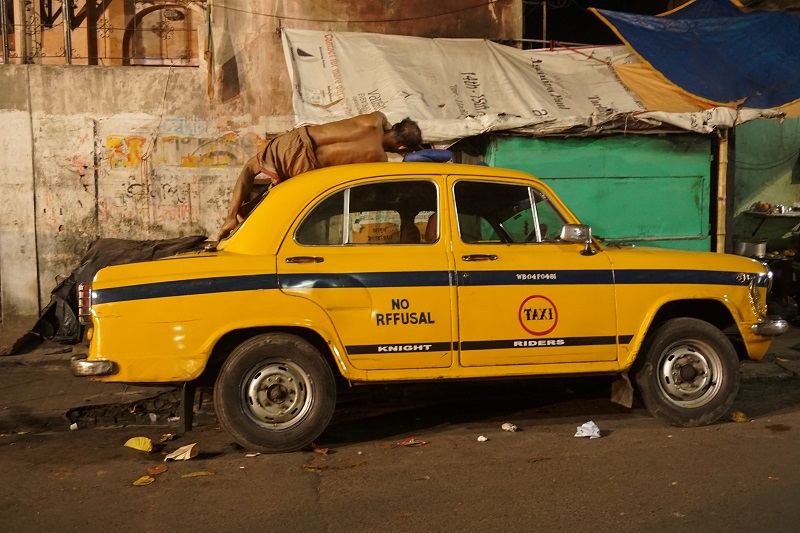
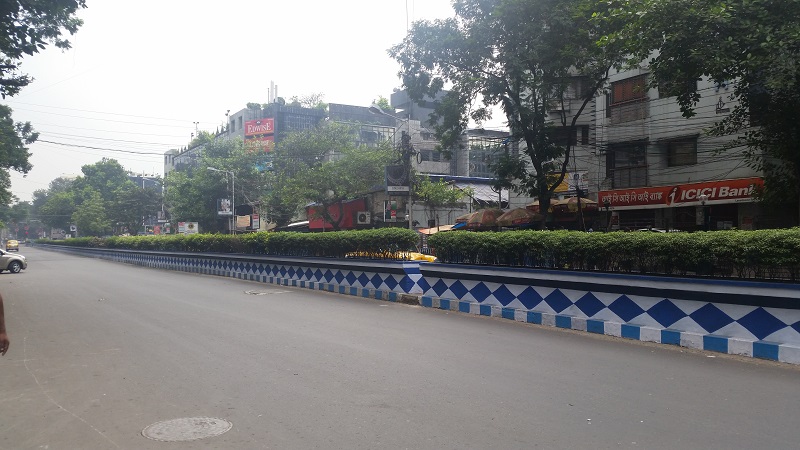
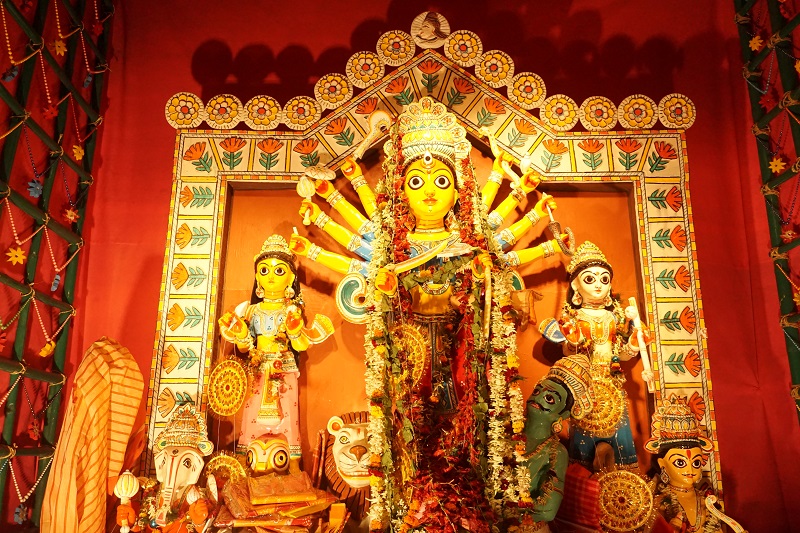
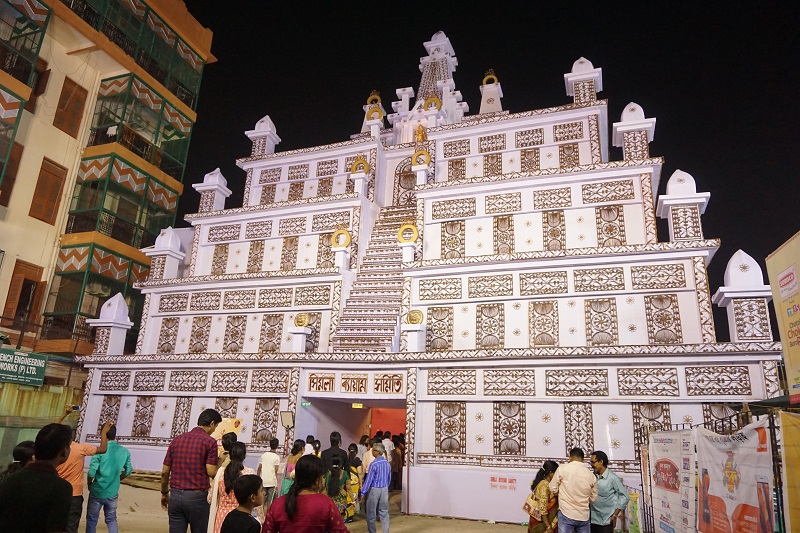
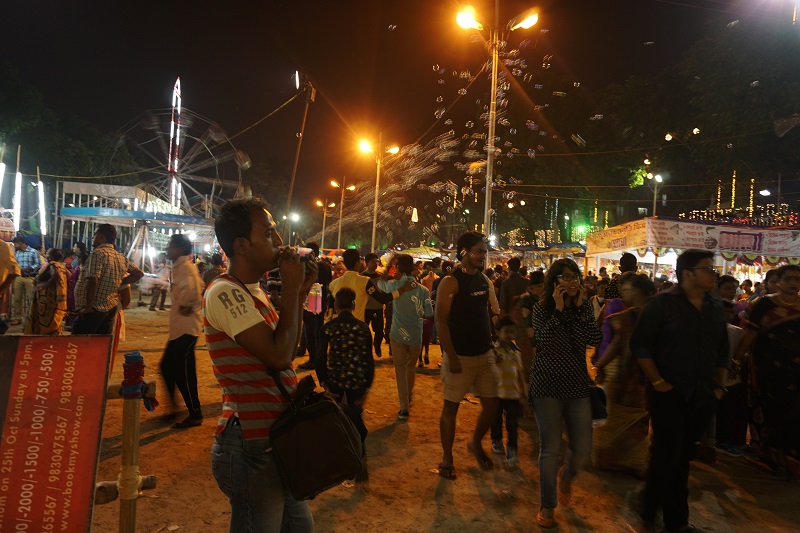
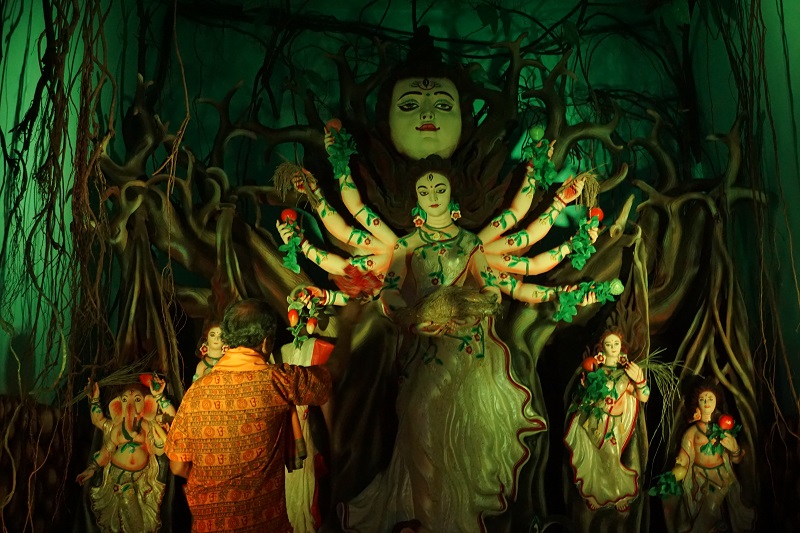



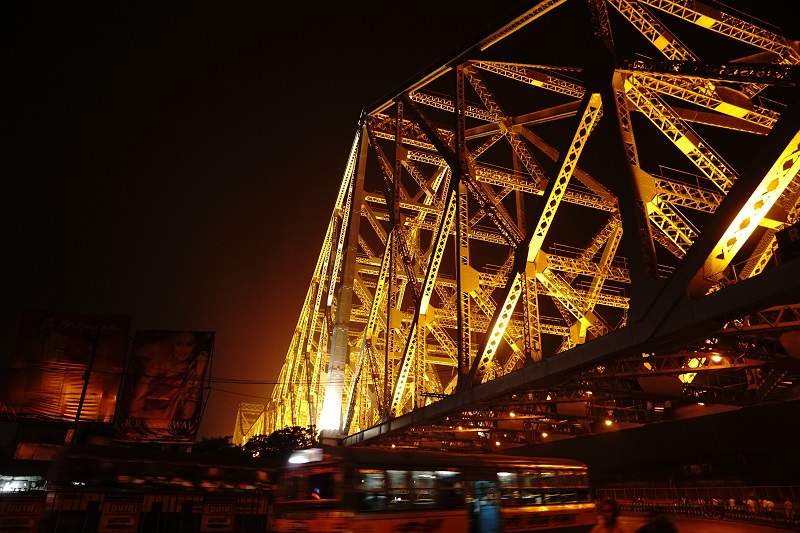

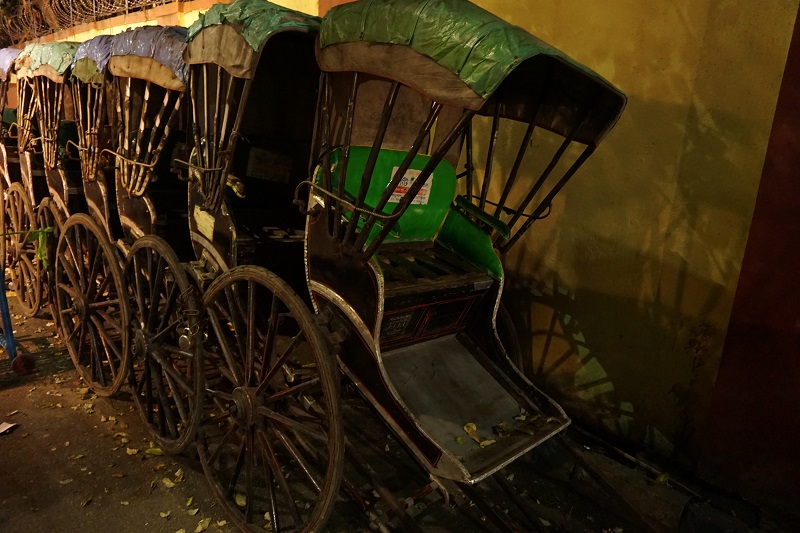

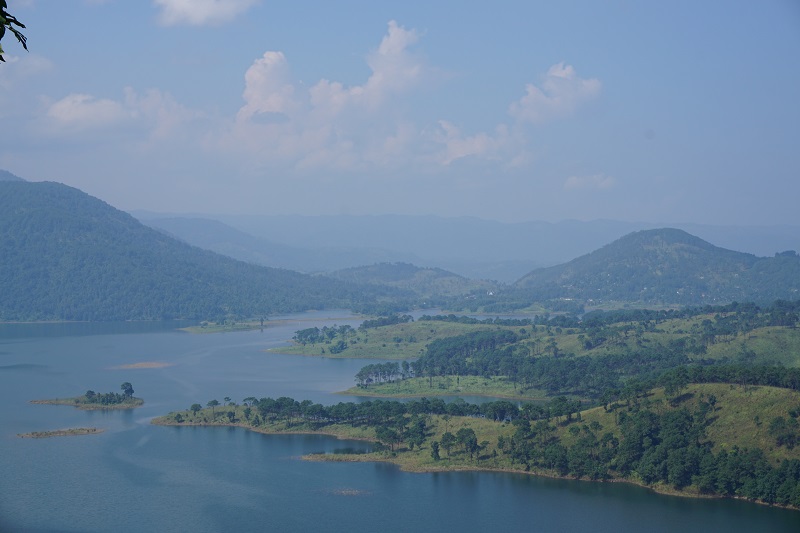

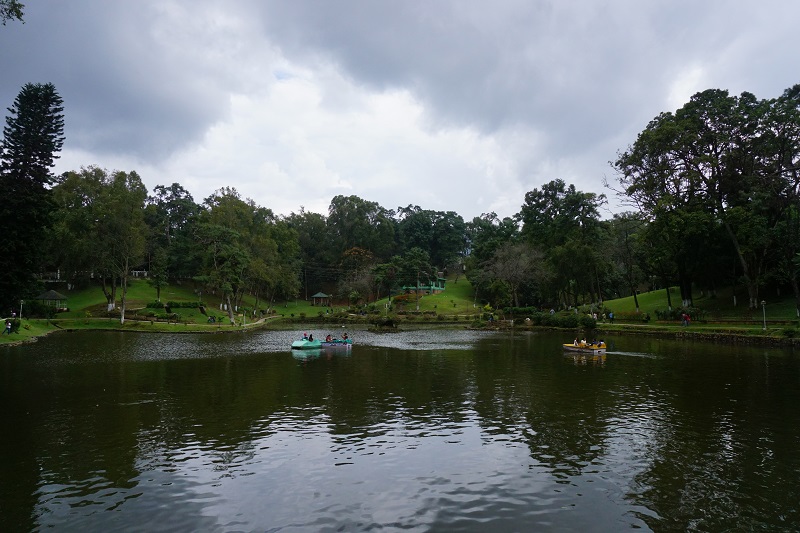

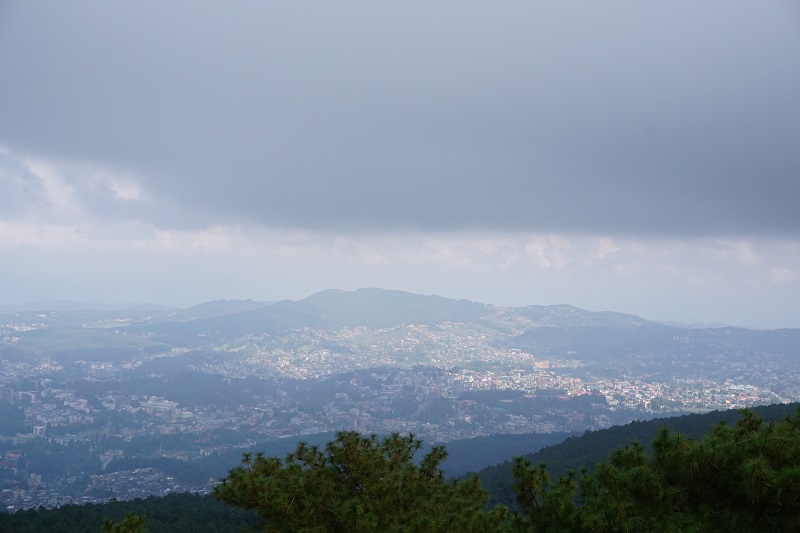
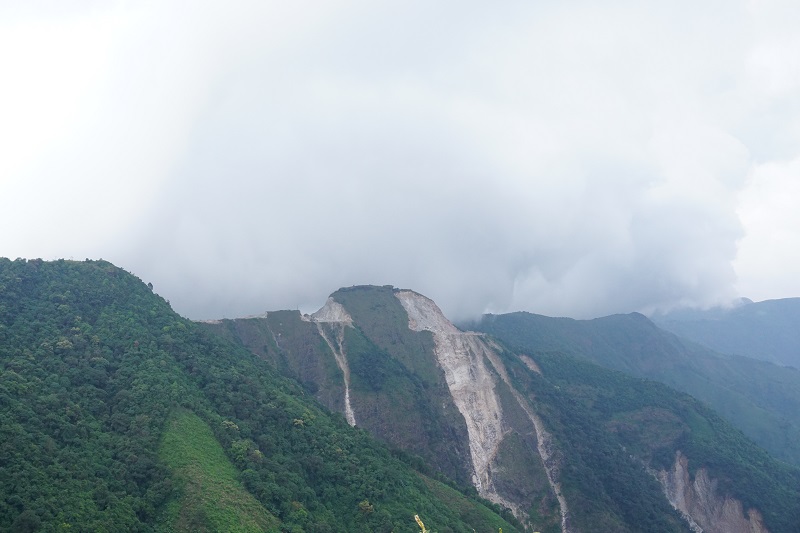

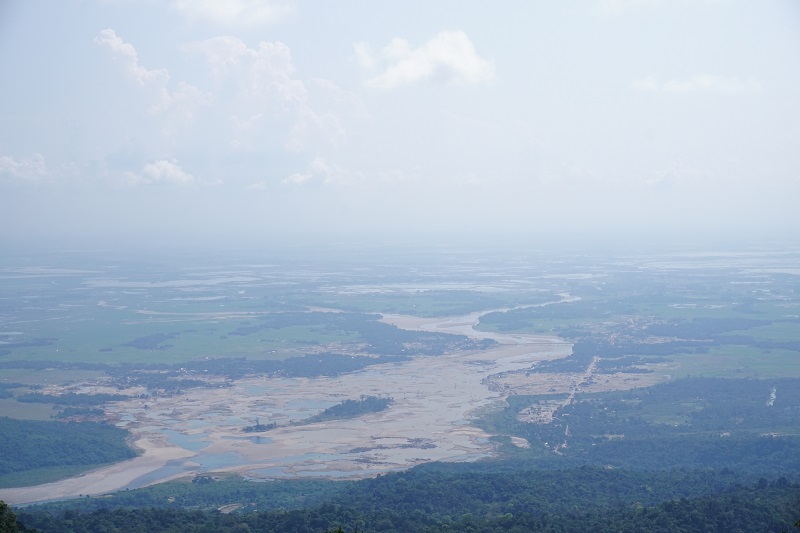
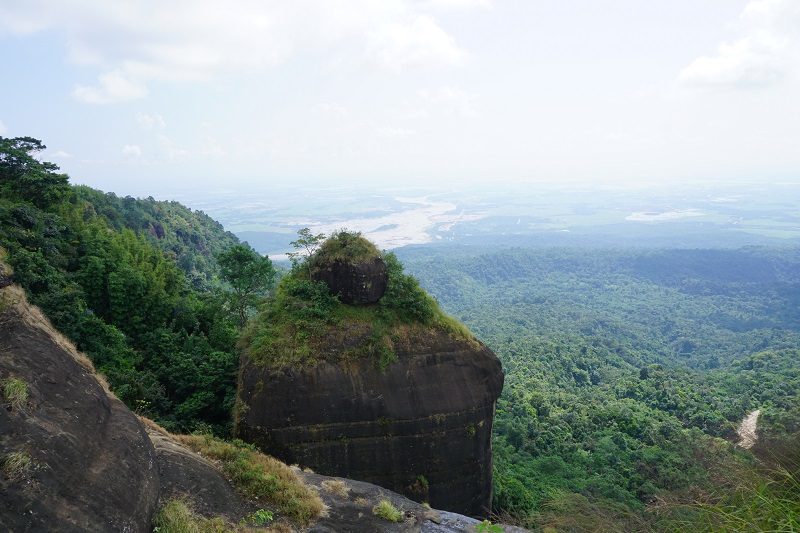
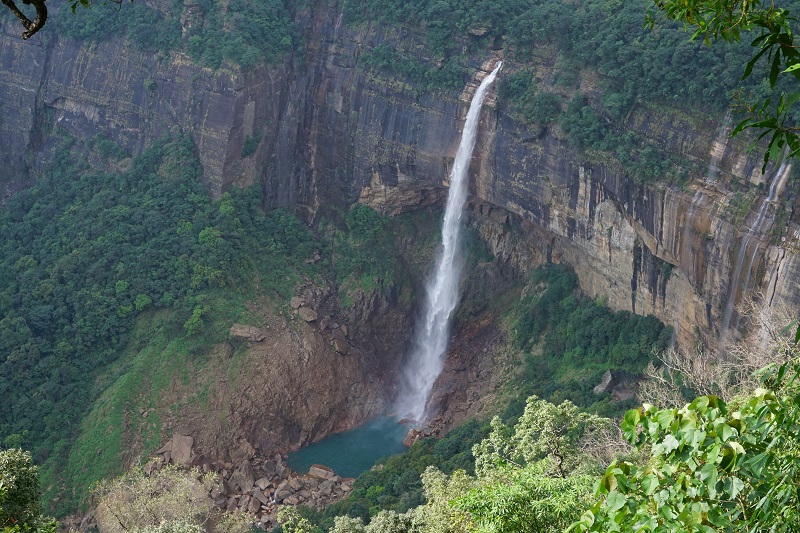
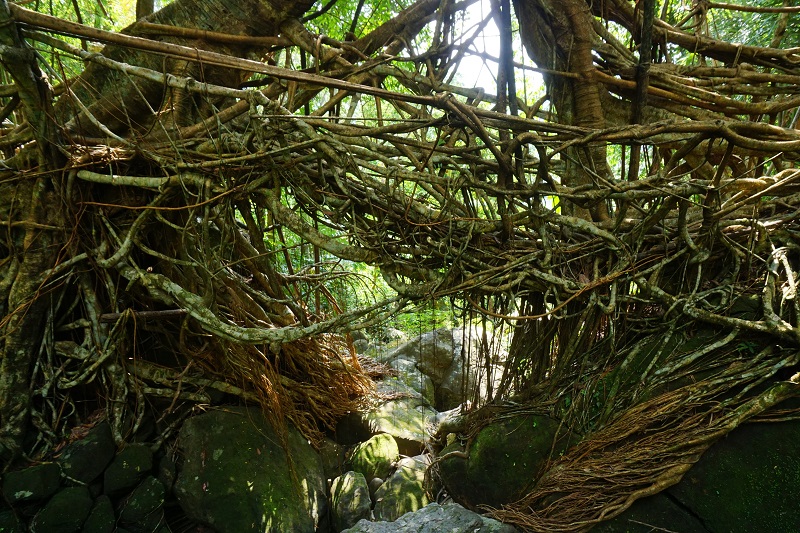

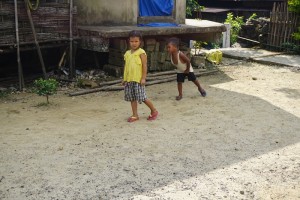 We decided to walk a little further to the Nowet Lookout. As it happened, the lookout was on the other side of the village and we got to watch the village life go by. There were kids playing, chickens running around the village as well as other animals like dogs and pigs. The houses had traditional thatch roofs with bamboo for walls and support. Modernity had reached the houses as some houses had dish TV and a few houses were made of brick.
We decided to walk a little further to the Nowet Lookout. As it happened, the lookout was on the other side of the village and we got to watch the village life go by. There were kids playing, chickens running around the village as well as other animals like dogs and pigs. The houses had traditional thatch roofs with bamboo for walls and support. Modernity had reached the houses as some houses had dish TV and a few houses were made of brick.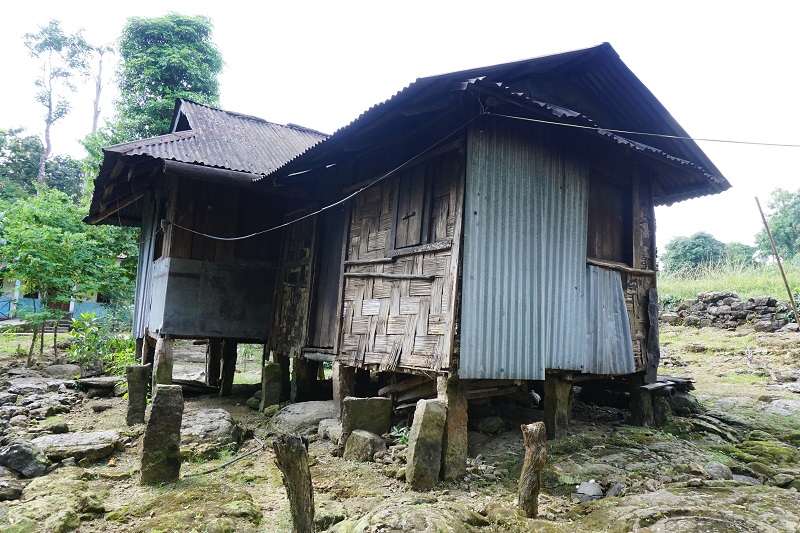




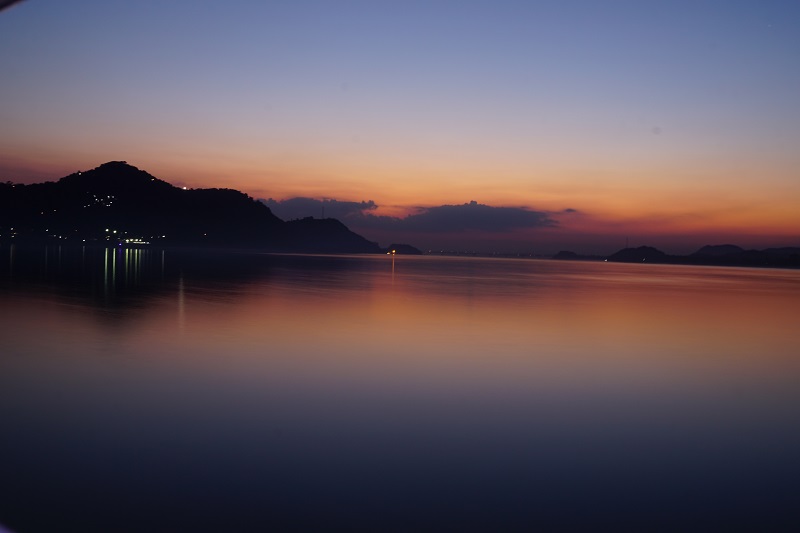
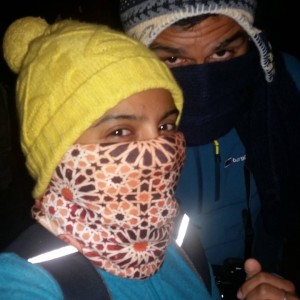
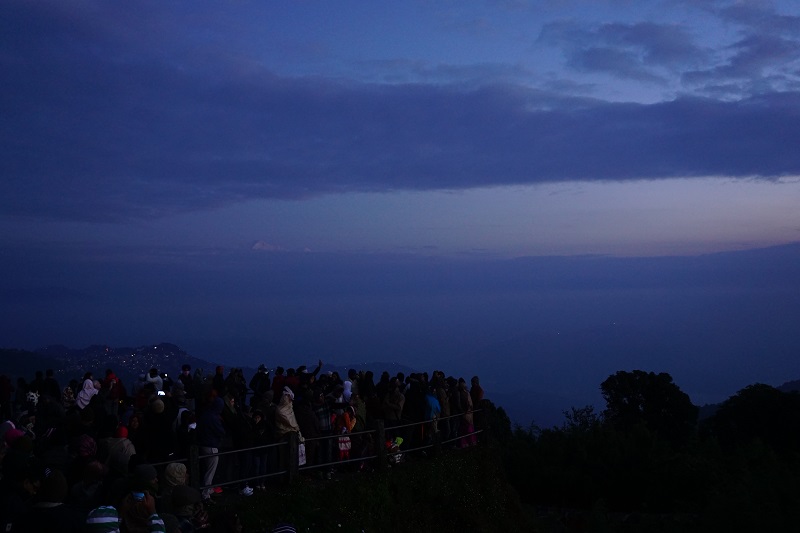
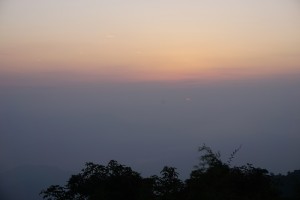



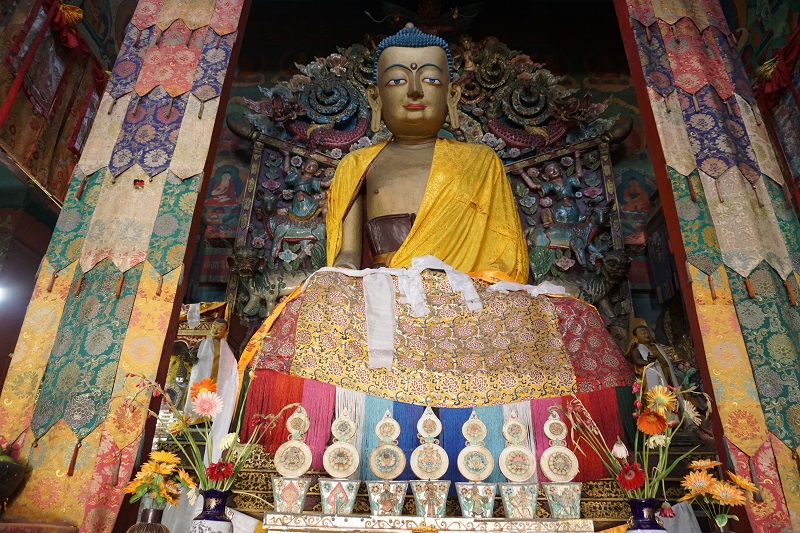
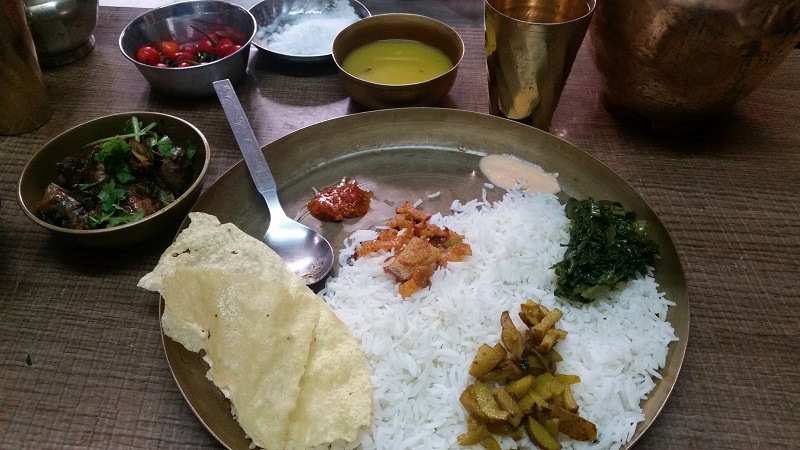



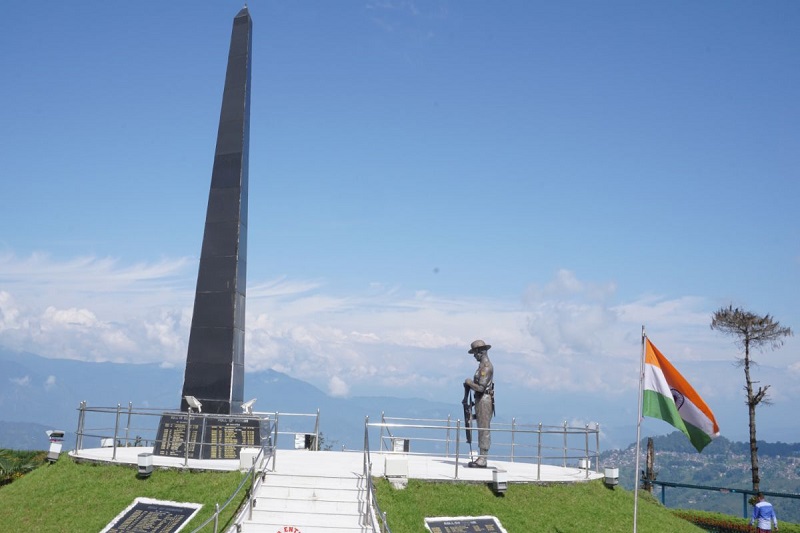
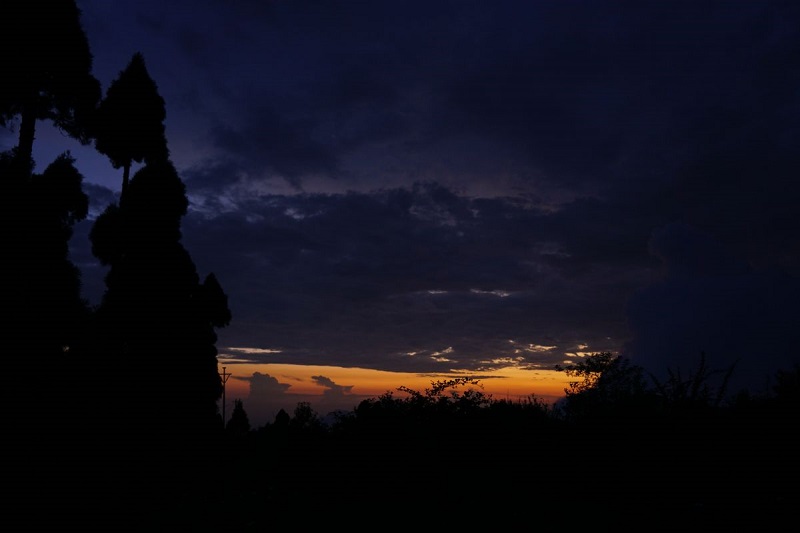

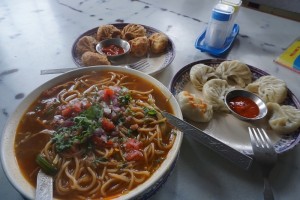

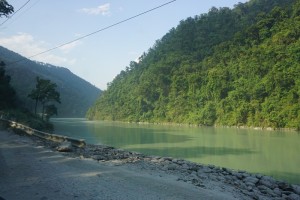
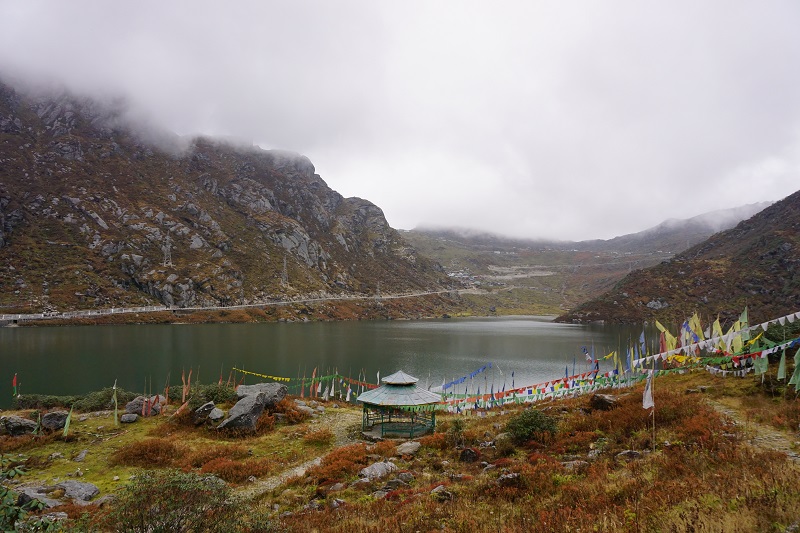
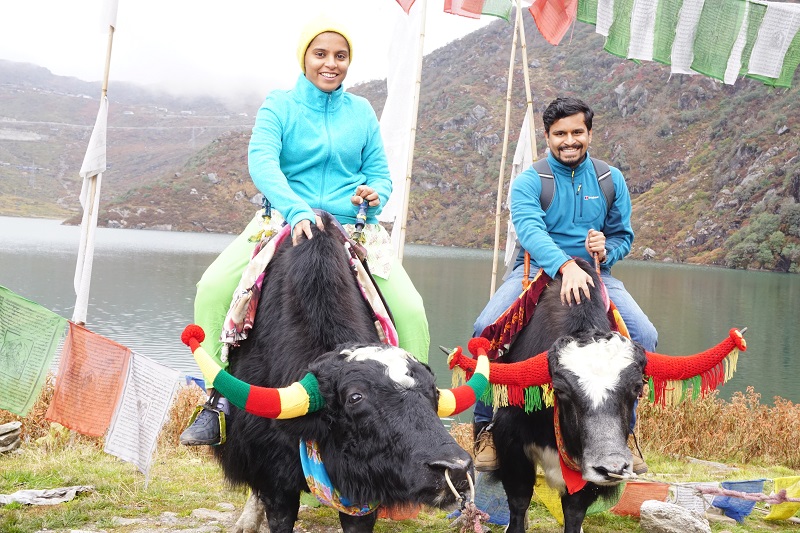
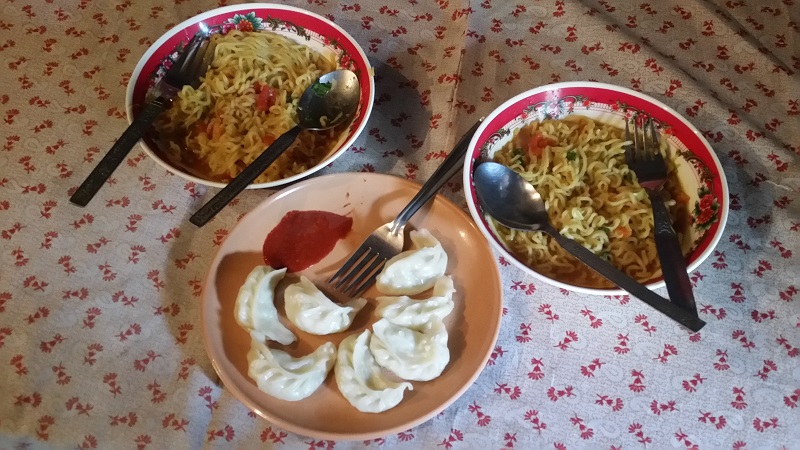

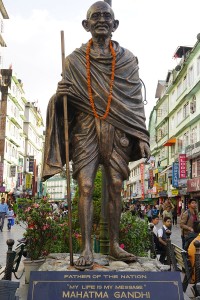

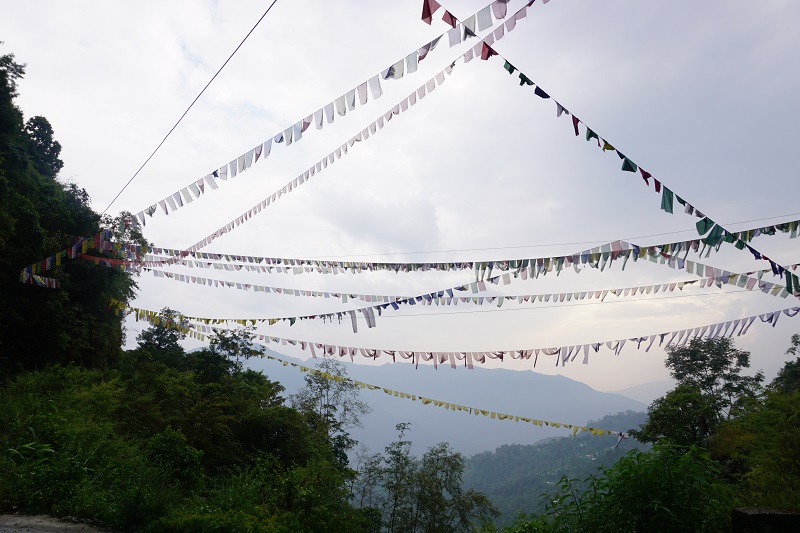



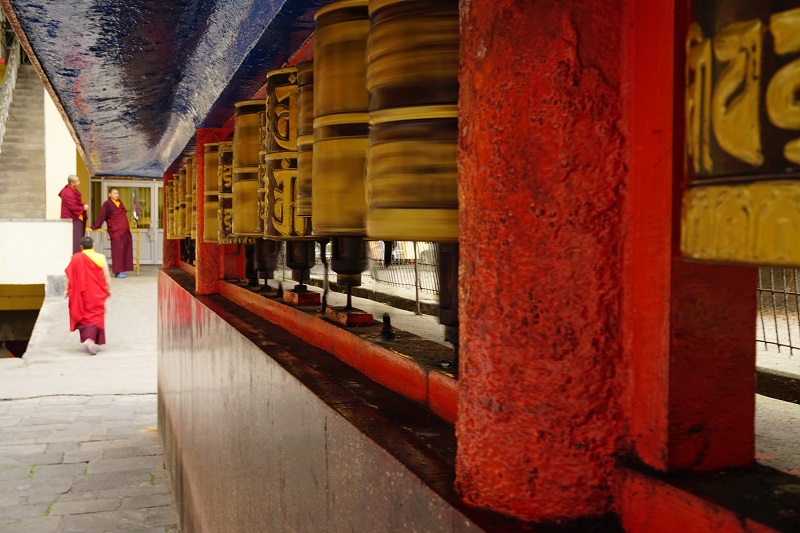
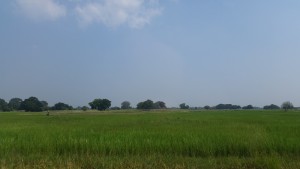

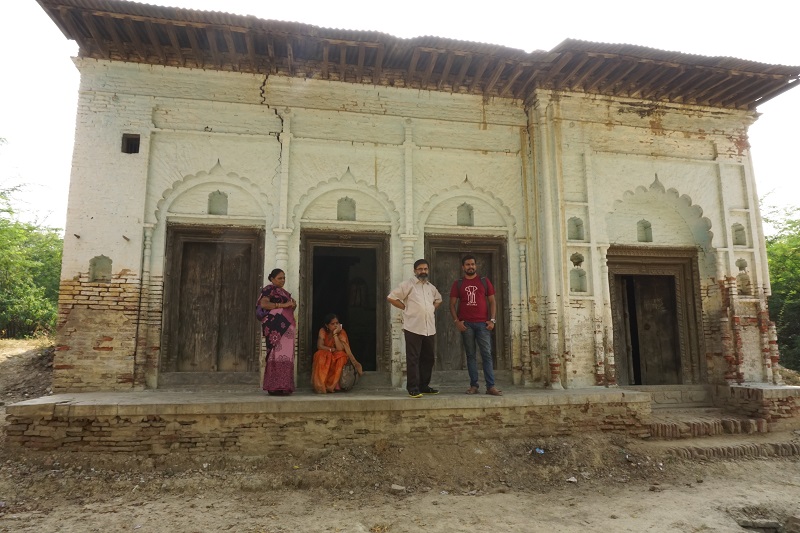
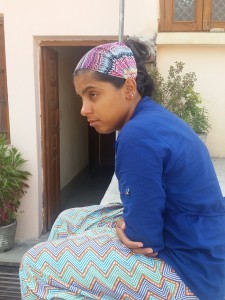 Up until now, we had been avoiding getting sick. However, Shruti started getting a cold on the day in the village. However, the next day, the cold turned into a fever and a Delhi belly. Having a sickness in an Indian family is nothing short of a circus with everyone giving different advice and medicines.
Up until now, we had been avoiding getting sick. However, Shruti started getting a cold on the day in the village. However, the next day, the cold turned into a fever and a Delhi belly. Having a sickness in an Indian family is nothing short of a circus with everyone giving different advice and medicines.